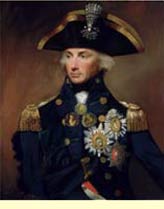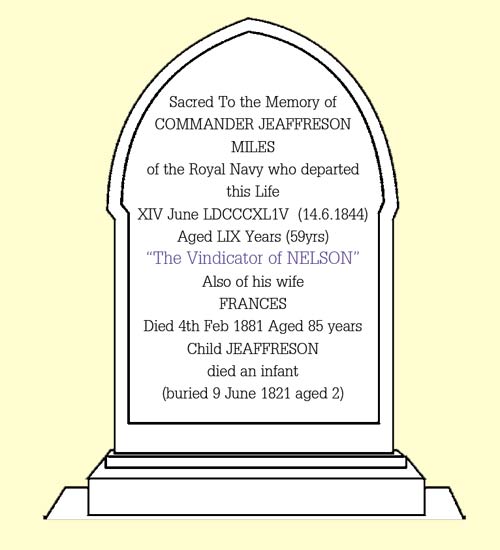The Vindicator of Nelson
|
It was in 1843, the year when the column to Nelson was erected in Trafalgar Square, that Jeaffreson published his pamphlet entitle “A vindication of Admiral Lord Nelson’s proceedings in the Bay of Naples”. He was defending the reputation of Nelson, which had been increasingly attacked from February 1800 when Charles James Fox, leader of the Whig opposition, quoted letters in Parliament about alleged atrocities in Naples in 1799. These were developed in a book by a pro-republican authoress, Helen Williams; these attacks became known as the Black Legend.
|
After Nelson’s death in 1805, Nelson was transformed into a national god, and there was a rush to print anything about him, many peddling the Fox/Williams line. One of these, Captain Edward Foote, who had been involved in granting an armistice to the defeated Italian Jacobin rebels in Naples, believed that some of the stigma attached to him, and he produced a Vindication of his own conduct, blaming Nelson indirectly, but also declaring Nelson’s actions at Naples were influenced by Lady Hamilton. James Clark, who wrote the official life of Nelson then also attributed Nelson’s faults to his “dangerous relaxation in the extraordinary talents and captivating flattery of Emma, Lady Hamilton”.
But what had Nelson done? He had annulled the armistice with the rebels, and ordered a court-martial of Commodore Francesco Carocciolo who had commanded the treacherous side’s gunboats. He had ordered the Commodore to be hanged at the yardarm of the Minerva on the evening of 29th June 1799. Robert Southey, the poet, later attacked Nelson for that and for abandoning his marriage. He described it as “a stain upon the memory of Nelson and the honour of England”. Another writer later alleged that Lady Hamilton had persuaded Nelson to take her in his barge to view Caracciolo’s corpse swinging in the breeze.
So the comments continued, each adding sensational colour and moral outrage, until Commander Miles revealed, in his pamphlet, that the name of the national hero was being tarnished with lies and misunderstandings, Nelson had royal authority for his actions in Naples. Those who had made the agreement with the rebels had no such authority. It was Miles who saw clearly that the national hero was being attacked by ignorant, petty and stupid people. His Vindication was an attempt to correct the record for all time.
But what had Nelson done? He had annulled the armistice with the rebels, and ordered a court-martial of Commodore Francesco Carocciolo who had commanded the treacherous side’s gunboats. He had ordered the Commodore to be hanged at the yardarm of the Minerva on the evening of 29th June 1799. Robert Southey, the poet, later attacked Nelson for that and for abandoning his marriage. He described it as “a stain upon the memory of Nelson and the honour of England”. Another writer later alleged that Lady Hamilton had persuaded Nelson to take her in his barge to view Caracciolo’s corpse swinging in the breeze.
So the comments continued, each adding sensational colour and moral outrage, until Commander Miles revealed, in his pamphlet, that the name of the national hero was being tarnished with lies and misunderstandings, Nelson had royal authority for his actions in Naples. Those who had made the agreement with the rebels had no such authority. It was Miles who saw clearly that the national hero was being attacked by ignorant, petty and stupid people. His Vindication was an attempt to correct the record for all time.
|
Further information on the family living in Knapton:
Miles Jeaffreson: Born Fakenham Norfolk 1785 Both children were baptised in Knapton in 1817 & 1818 (Parish Records) He appears on the 1841 Census living in Knapton but where is not known. He appears on the 1832/1834/1835 Poll and Electoral List – Living in Knapton From this information, it is certain that he lived in Knapton with his family when he was not at sea on board ship. It is thought that he retired in 1843 so he didn’t live long after his retirement as he died on the 14th June 1844 in Knapton. |
Click On The Image Above To Enlarge
|





